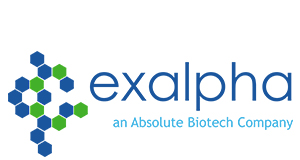Mouse anti Human Rit
Mouse anti Human Rit, Monoclonal, IgG1, Clone: 14G7
Artikelnummer
EXAX1185M
Verpackungseinheit
100 µg
Hersteller
Exalpha Biologicals Inc
Verfügbarkeit:
wird geladen...
Preis wird geladen...
Clone: 14G7
Background: Rit and its neuron-specific homologue, Rin, define a recently discovered subfamily of Ras-related GTPases. Rit and Rin are membrane-associated in spite of the fact that they lack a CAAX box or similar C-terminal lipidation motif. Rit and Rin display 64% amino acid sequence identity and share a unique nine amino acid effector domain (DPTIEDAYK) that is 100% conserved between the murine and human proteins. Although the effector domain sequences of Rit and Rin are very similar to that of Ras, Rit and Rin have been shown to interact with the known Ras-binding proteins RalGDS, Rlf and AF-6, but not the Raf kinases, RIN1 or the p110 subunit of PI3 kinase. For this reason, it has been suggested that Rit and Rin may play important roles in the regulation of signaling pathways distinct from those controlled by Ras.
Purification Method: Protein A or G purified
Concentration: See vial for concentration
Source: Hybridoma produced by the fusion of splenocytes from mice immunized with recombinant full-length human Rit protein and mouse myeloma cells.
References: 1. Rusyn, E.V., et al. Rit, a non-lipid-modified Ras-related protein, transforms NIH3T3 cells without activating the ERK, JNK, p38 MAPK or PI3K/Akt pathways. Oncogene 2000, 19, 4685-4694.2. Lee, C.H. et al. Rin, a neuron-specific and calmodulin-binding small G-protein, and Rit define a novel subfamily of ras proteins. J. Neurosci. 1996, 16, 6784-6794.3. Shao, H., et al. Biochemical characterization of the Ras-related GTPases Rit and Rin. Arch. Biochem. Biophys. 1999, 371, 207-219.
UniProt: Q92963
Caution: This product is intended FOR RESEARCH USE ONLY, and FOR TESTS IN VITRO, not for use in diagnostic or therapeutic procedures involving humans or animals.
Background: Rit and its neuron-specific homologue, Rin, define a recently discovered subfamily of Ras-related GTPases. Rit and Rin are membrane-associated in spite of the fact that they lack a CAAX box or similar C-terminal lipidation motif. Rit and Rin display 64% amino acid sequence identity and share a unique nine amino acid effector domain (DPTIEDAYK) that is 100% conserved between the murine and human proteins. Although the effector domain sequences of Rit and Rin are very similar to that of Ras, Rit and Rin have been shown to interact with the known Ras-binding proteins RalGDS, Rlf and AF-6, but not the Raf kinases, RIN1 or the p110 subunit of PI3 kinase. For this reason, it has been suggested that Rit and Rin may play important roles in the regulation of signaling pathways distinct from those controlled by Ras.
Purification Method: Protein A or G purified
Concentration: See vial for concentration
Source: Hybridoma produced by the fusion of splenocytes from mice immunized with recombinant full-length human Rit protein and mouse myeloma cells.
References: 1. Rusyn, E.V., et al. Rit, a non-lipid-modified Ras-related protein, transforms NIH3T3 cells without activating the ERK, JNK, p38 MAPK or PI3K/Akt pathways. Oncogene 2000, 19, 4685-4694.2. Lee, C.H. et al. Rin, a neuron-specific and calmodulin-binding small G-protein, and Rit define a novel subfamily of ras proteins. J. Neurosci. 1996, 16, 6784-6794.3. Shao, H., et al. Biochemical characterization of the Ras-related GTPases Rit and Rin. Arch. Biochem. Biophys. 1999, 371, 207-219.
UniProt: Q92963
Caution: This product is intended FOR RESEARCH USE ONLY, and FOR TESTS IN VITRO, not for use in diagnostic or therapeutic procedures involving humans or animals.
| Artikelnummer | EXAX1185M |
|---|---|
| Hersteller | Exalpha Biologicals Inc |
| Hersteller Artikelnummer | X1185M |
| Verpackungseinheit | 100 µg |
| Mengeneinheit | STK |
| Reaktivität | Human, Mouse (Murine) |
| Klonalität | Monoclonal |
| Methode | Western Blotting |
| Isotyp | IgG1 |
| Wirt | Mouse |
| Konjugat | Unconjugated |
| Produktinformation (PDF) | Download |
| MSDS (PDF) | Download |

 English
English






